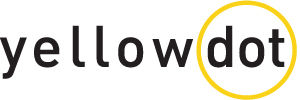Perhaps you’re starting to see an increase in website traffic from your Facebook ads, SEO, social media and content creation. You did what you said you were going to do – you committed to marketing. Now your Google Analytics numbers are up and you’ve got more unique visitors than you know what to do with. And that traffic’s got to mean more business, right?
Maybe not. While the role of digital marketing is to raise awareness of your brand and drive traffic, it’s your website that will turn that traffic into more leads and paying customers. Your website is where your business model and brand positioning are shaped, and if you do it right, you’ll have a website that engages your audiences to take action.
Building a winning website is no simple task. You need content about your business, location pages, photos, a contact page, an about page, and more. And then you have to put it together in a way that makes sense to your visitors and makes them do what you want them to do – either buy something, fill out a form, or pick up the phone.
The way to create a converting website is to know what your visitors want, and answer questions they didn’t even know they had, before they ask them. Then you can design a website that gives them exactly what they’re looking for.
Below are 5 website tips that will help you convert traffic into leads and paying customers:
1. Create the right content
When you visit a website, you want content that sounds like it’s speaking directly to you. Drilling down to your target audience is the best way to provide content that resonates. You have to know who you’re talking to, but it doesn’t stop there. You have to have the guts to talk directly to them and forget about everyone else. Don’t follow the herd and try to be everything to everyone. You’ll convert more people by positioning your products and services to one specific market rather than trying to be everything to everyone.
For small businesses and entrepreneurs this can be scary. You may be emotionally attached to your brand, or still a little unsure of your target audience.
That’s okay. We’ve all been there. The important thing to keep in mind is that your website isn’t about you at all. It’s about your audience. So let people know what’s in it for them. Talk about solutions and results that will make a difference. If you still don’t have enough stats, take another step back and look at your website. Is what you want to know there? If not, it’s time to take out your pen and fill in the gaps.
2. Make your website crystal clear
Everything from the layout to the navigation and buttons should be clean and visible. You want to make it as easy as possible for visitors to find what they’re looking for. Each time a visitor has to pause because of an interrupted path or because something doesn’t make sense, you run the risk of losing their attention. When you let them think about what to do, you’re giving them the option to leave. You can avoid this by providing clear information that’s easy to digest, without any clutter or confusion that can cause friction. Think about how visitors arrived at your site: either from a referral, a Google ad, an inbound link or a search term. From each entry point they have a specific goal. They’re either looking for information related to the Google ad or search terms, or looking to validate the referral. Make sure they can find what they’re looking for from every entry point. Guide visitors through each page of your site with clear visuals and text that tell them what to do next, and more importantly, why they should do it. What’s in it for them? Show them they will benefit from performing the next action (and don’t ask them to perform actions that have no benefit to them). And don’t forget to make it easy for visitors to contact you by including your phone number at the top of every page.
3. Use prominent call-to-action buttons
Think about the high priority tasks you want your visitors to perform: sign up, complete a purchase, subscribe to an email list. Then use call-to-action buttons that grab their attention and make it easy for them to complete. Call-to-action buttons are just that: actions. Use clear labeling and tell users exactly what they should do, as if you were talking to them directly. Start the text with a verb, like “Create an account” or “Try us out”. Use size, color and placement to differentiate your call-to-action buttons from each other.
4. Fine-tune your click paths
Every click a visitor makes on your site affects your bottom line. The fewer clicks they have to make before they find what they need, the better chance you have of converting them. Think about how prospects are arriving at your site. Is it from a Google search? Are you running a PPC campaign? Through referrals? Map out a user flow and make sure each page a visitor may land on has the information relevant to their entry point. For instance, if you’re running a Google ad campaign and have bid on the keywords “mobile storage bin”, make sure you direct them to a specific landing page about mobile storage rather than to your home page.
5. Blog
Try to post regular blog articles on your site. Send prospects and customers e-mails with well-timed and useful tips or product updates. Offer white papers and e-Books with in-depth, relevant information to give people a reason to visit regularly. When you encourage visitors to come back they remember you and will come to you the next time they need what you have. They’ll also be inclined to refer to you others you need similar services. Developing content like this takes a little extra effort and time, but will make a difference to your website’s revenue. If you don’t know where to start with blogging or can’t seem to find the time, try committing to one article per month initially, and scale up as you start to get more comfortable with the process.

